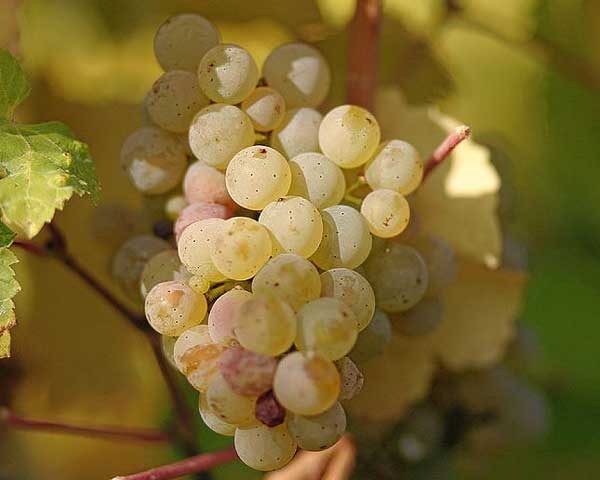How To Navigate A White Wine List
James Mallios is the managing partner of Amali restaurant, a Mediterranean restaurant in Manhattan. He spent five years as aplaintiff-side lawyer for aggrieved employees in the securities business before turning to a career in restaurants. In this column, "The Restaurant Insider," he plans to demystify the restaurant experience. His opinions are his own and not associated with Amali and its sister restaurants.
The arrival of ramps heralds the spring produce season. Any chef at a restaurant that claims to be seasonal or market-driven is walking to the greenmarket, calling Mikuni Wild Harvest, or foraging for spring onions in Central Park if they're bold. Spring, however, is not just a time to fawn over wild leeks. Once you see ramps, you see the beginning of rosé and white wine season.
Over the next few weeks (and some have already started), restaurants will pare down their red selections, particularly by the glass, and begin to add white and rosé selections. Industry statistics and interviews with my distributors support the claim that white wine sales increase by 25 percent during the summer months. Rosé sales are also on the rise all over the world. In France, for example, rosé wine sales now exceed white wine sales.
I love rosé. If I could only serve rosé all year round I would. And finding value in rosé on a wine list isn't difficult (unless you are at a brunch party at Lavo). Finding value in white wine, however, can be tougher.
Most wine writers will offer various top 10 lists of great buys for the summer. This is great if you are buying wine in a retail store, but it's functionally useless in a restaurant. What would you do? Keep 10 top 10 lists on file and cross reference them with the restaurant's list during a date? Sexy.
Here are some good tips for selecting white wine in the spring and summer at a restaurant that runs a strong wine program.
Rule 1: Look Past White Burgundy
When we mark up white burgundies at Amali (which is almost always chardonnay), we usually employ our standard marking practices because we know that eventually someone will order that 2010 Puligny Montrachet and we don't have to take a lower mark to sell it. It sells itself. You will rarely find good value for a white burgundy on a restaurant wine list.
Rule 2: For High-End Value (Wines From $80 to $120) Go to Germany and Austria
At the end of the day, wine is just a commodity. Like pork belly or soy. Anyone who says otherwise needs to brush up on history. The most expensive, highly regarded wines in the world in the 19th century were German rieslings. Two world wars later, not so much.
But there is a reason German rieslings used to be the most expensive wines in the world: they are outstanding and currently en vogue for the past few years among sommeliers. Paul Grieco's Summer of Riesling at Terroir is a good example of this movement amongst wine buyers.
Odds are, however, that the $90 riesling is a wine that the sommelier is passionate about and is probably marked at a far lower markup. Fact is, it is not easy to sell a German or Austrian white wine for more than $80 unless you work at Le Bernardin, your name is Aldo, and you are Master Sommelier. Even when I worked at Tribeca Grill (one of a handful of restaurants with a Grand Award from Wine Spectator), high-end German white wine sales were few and far-between.
Rule 3: For Value, Go to Santorini
For years, a small chorus has extolled the virtue of Greek wine and they're now finally being heard in American restaurants. You can find Greek glass pours at Per Se, Le Bernardin, and Colicchio & Sons.
The standard-bearer for white in Greece is currently the grape varietal assyrtiko from Santorini. The volcanic terroir of Santorini imparts a unique minerality to the wine which is native to the island. Plus, it doesn't hurt that everyone I have ever spoke to has a positive association with Santorini. Again, wine as commodity.
Because there are a handful of well-known Santorini assyrtikos, a list can work and keep your date from thinking you are a cheapskate. Keep an eye out for names like Sigalas, Gaia, and Koutsigianopoulos.
If you want to taste some great assyrtikos this week, visit tastesantorini.com. From April 16 to 19 there will be events all over Manhattan where you can taste Santorinian wine and meet the winemakers.
Rule 4: Use Rules Two and Three and Talk to the Sommelier
I recently ate dinner at Crown on Madison Avenue on the Upper East Side. Beautiful space, food was great, the markup on the wine lists were not charitable. But then again, in fairness to them, Madison Avenue rent is not cheap. About 90 percent of the wine is list is more than $90.
I walked in and immediately gravitated to the rieslings and discussed them (along with a mention of assyrtiko) to the sommelier. She recommended a wonderful wine which was a lower price than what I initially suggested. Many sommeliers love white burgundy, but every sommelier has wine regions and cuvees that they are passionate about but do not sell regularly in the restaurant.
Hopefully you will find and like German wines and assyrtiko. But referencing them to a good sommelier is telegraphing to them that they can recommend something off the beaten path that will likely be one of the wines that have a great mark up because they want to sell it.
